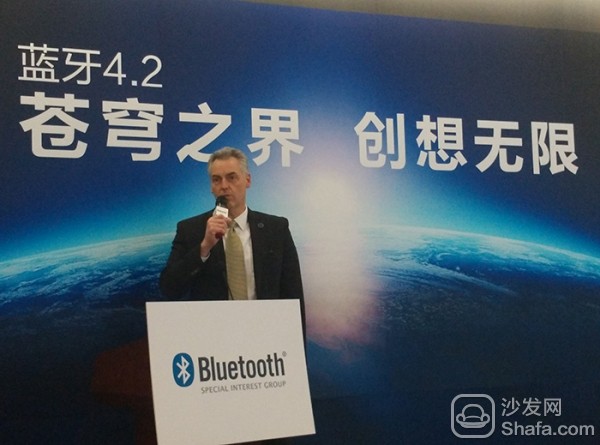
Ke Ruide, Senior Marketing Director, Bluetooth Technology Alliance
In December 2014, the Bluetooth Technology Alliance (SIG) announced the Bluetooth 4.2 standard worldwide. In the afternoon of yesterday (January 21), SIG held a media conference in Beijing and began to implement this technology in China.
Compared to Bluetooth 4.0, 4.1 and Bluetooth 4.2, although it is only a minor version number, it has updated a lot. It focuses on three aspects: security, speed, and networking.
After the release of Bluetooth 4.0, Beacon positioning technology began to prevail, but it was followed by the outbreak of user privacy issues. Lei Fengnet has reported that Titan, an advertising company in New York City, deployed beacon networks in the city for unknown purposes and can be used to track user information. With Bluetooth 4.2, users will be able to set their own privacy levels to avoid such tracking.
In terms of speed, Bluetooth 4.2 achieves better transmission energy efficiency by increasing the capacity of data packets. The official data is a 2.5-fold increase in transmission speed.
Networking means that Bluetooth 4.2 started to support network connections using IPv6/6LoWPAN technology. 6LoWPAN is a small network standard similar to Ethernet. It has a slow transmission rate and is commonly used in industrial or traditional home control equipment. With networking capabilities, the future of Bluetooth-based real-time sensor networks will also come faster.
In general, security and speed updates are only routine upgrades, and the support of networking capabilities is a surprise. In the presentation, Kerid, the senior marketing director of SIG, stated that the support for networking is mainly from the needs of some downstream developers. Everyone hopes to use Bluetooth better in the IoT space. He also revealed that the current Bluetooth technology only supports one-to-one, one-to-many connections, and the Alliance will soon support the many-to-many approach, which is the standard implementation of Bluetooth Mesh technology.

In the preaching, Kered also shared the SIG's judgment on the future growth of Bluetooth technology. He said that between 2013 and 2018, the largest market for Bluetooth Smart (Bluetooth 4.0+) grew in the smart home sector, with a compound annual growth rate of more than 232% for consumer electronics. Followed by consumer electronics, Beacons and retail, health and fitness. At the scene, there are companies that showcase smart home products based on Bluetooth technology, such as light bulbs, cups, and remote controls.
The support of networking and many-to-many Mesh is also in response to market demand. These two features are very important for Bluetooth to enter the smart home. In the past many years, smart home devices mostly use Zigbee technology to connect because they have an advantage in the massive device group online. The many-to-many Mesh technology has greatly improved the networking capabilities of Bluetooth and has the ability to replace Zigbee.
However, at present these items have not yet been specifically placed on the product, so Zigbee also has a counter-time window.
Recommended installation sofa butler, download address: http://app.shafa.com/
